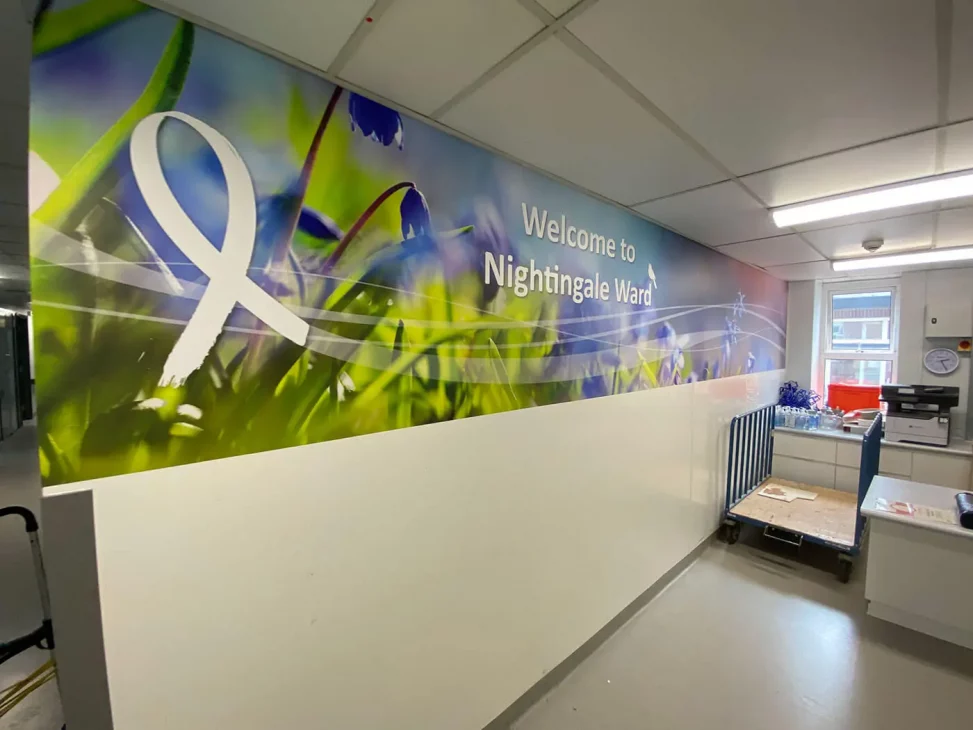
While we might have all been talking about infections and diseases far more than we ever would have imagined ourselves doing three years ago, there are hardworking teams working on wards up and down the country whose working lives are dedicated to looking after those patients affected by them. And while it’s not a specialty that generates a lot of mainstream conversation, the work they do is incredibly important; not only for current patients but also for those who may be affected in the future.
Just before COVID-19 changed the course of the last three years, we were contacted by Yvette Milnes, manager of the Infectious Diseases and Tropical Medicine ward – ‘Nightingale Ward’ – at Nottingham University Hospital.
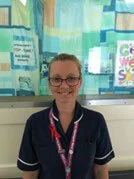
Linkedin – Nottingham Hospitals Charity @NightingaleNUH / @nuhcharity
After many conversations, a temporary move and more than a two year wait, we recently started work on this incredibly exciting project, which was funded by a grant of over £45,000 from Nottingham Hospitals Charity. We caught up with Yvette to find out more about how it came about and how much of a difference it’s going to make to the patients and staff who use it.
Donations given to wards in this speciality are limited and other services tend to receive bigger sums of money and receive them more often.
For many people, the title can make them feel uneasy, mostly because we treat patients with illnesses that are often stigmatised: HIV and TB, for example, but we try and promote other, fresh ideas about the work we do as a team. We were lucky enough to receive a sum of money from one kind donor and we wanted to make sure we did something special with it.
Yvette first spoke to us before the pandemic, but the pandemic itself meant the project had to be placed on hold for over two years. Still, she never gave up hope that it would come to fruition.
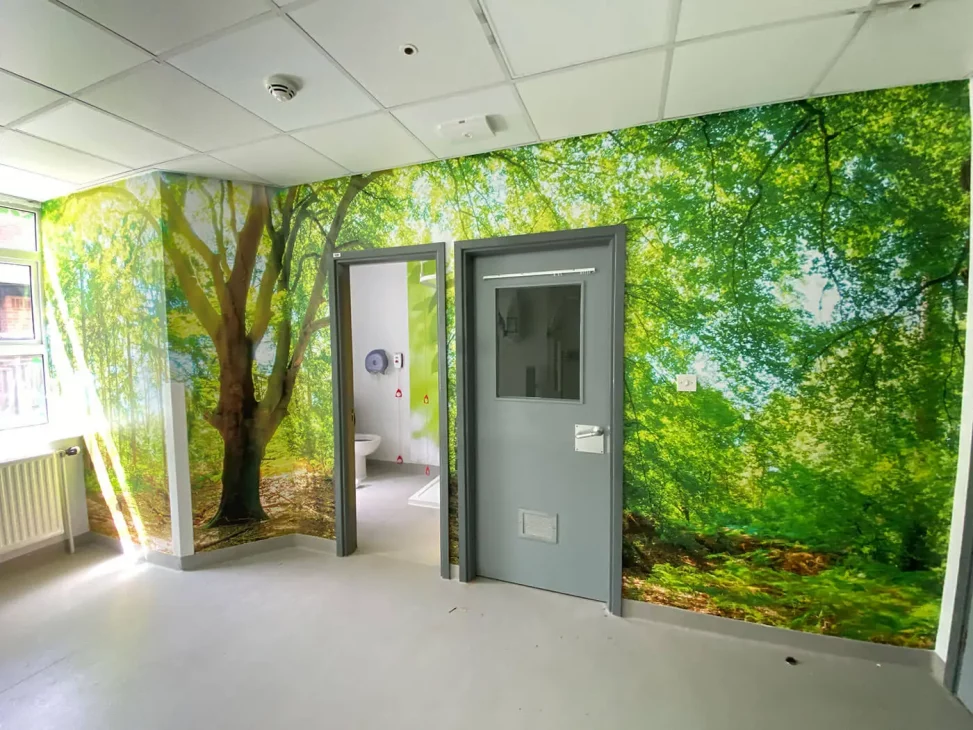
I first spoke to Colin when he was on the side of a motorway: He missed my call and called me back while he was out on his motorbike! He had a can-do, positive attitude from that very first conversation; it was always about what we wanted the ward to look like, and that being the starting point, rather than what they could make the ward look like. There was a shared determination: it wasn’t ‘Can we do this?’ but ‘How can we make it happen?.
As part of the project, Colin and Grosvenor’s lead designer, Victoria, engaged with patients to get a sense of what they would like to see too. This was so important because some patients, those admitted with TB for example, will stay in the same room for weeks, and even months, at a time.
The clinical team assigned to look after each patient are often the only people that person will see for the duration of their stay, but always in masks. Yvette calls this a ‘faceless episode’. Add this to the reality of staying in the same room, staring at blank walls, and it’s easy to see why patients can begin to feel claustrophobic and frustrated. It was important for the staff to create something that patients could almost escape into and feel like they had somewhere else to go.
The approach we took to the designs borrowed from the ‘dementia strategy’ that is being increasingly adopted by hospitals. It focuses on bringing the outside in and introducing nature-based themes into the ward environment.

Right from that initial conversation with Colin, through to more in-depth discussions about our vision for the ward, everyone at Grosvenor has listened to our needs so well. Victoria managed to capture everything we wanted first time – we didn’t change a thing from the designs that were presented to us. She’s also included some really thoughtful elements into them: the name of the ward has been incorporated into the Wall Art® above the nurses’ station and the white ribbon next to it is a nod to the HIV/AIDS awareness ribbon.
It was nice to work with a team that was so positive and had such a refreshing attitude. I loved the fact they are honest; but I found it so easy to articulate and have honest conversations with Colin and Debbie: they allow you to be blunt – and I can be quite blunt!
While most of our work on the ward is now complete, there’s still some Wall Art® to finish before the space is cleaned, fogged and sanitised to ensure it’s ready to safely welcome patients again.
The project was made possible thanks to generous donations to Nottingham Hospitals Charity, which funds enhancements to the patient environment, as well as specialist equipment, medical research, and staff development programmes, at Nottingham’s NHS hospitals.
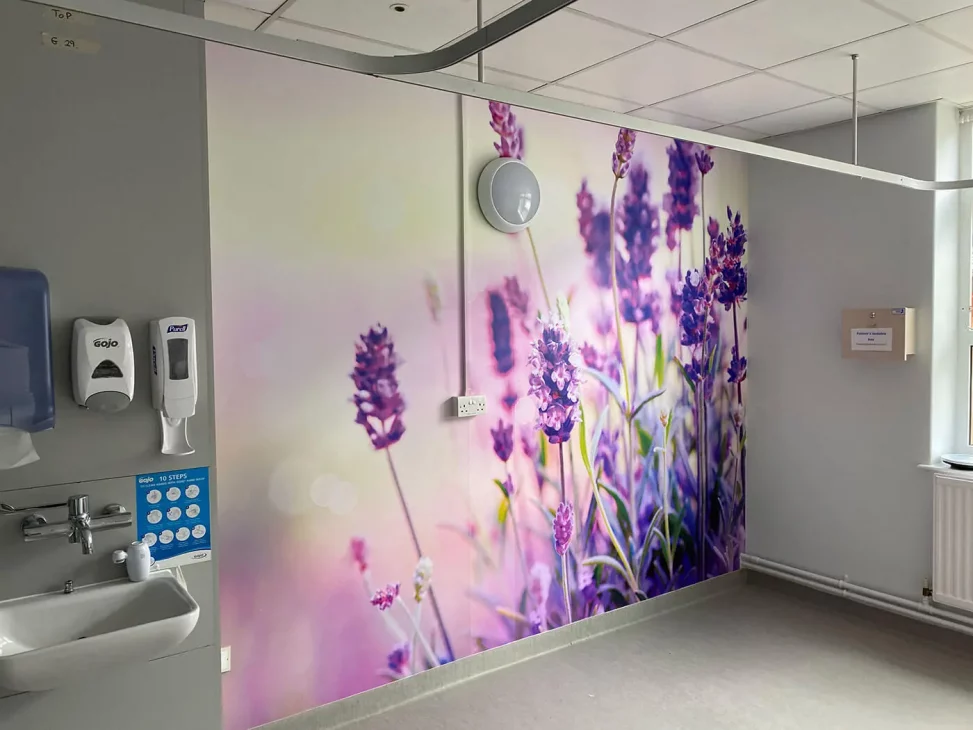
We’re aiming to take patients back towards the end of July. We’ve been on a different ward since February 2022 as ours was repurposed during the pandemic to treat COVID-19 patients who needed to be treated in our negative pressure rooms. Before that, it had been home to our specialty since the mid ‘90s, when HIV was an emerging healthcare issue.
Of course, we’re now seeing a rise in the number of monkeypox cases in the UK and we’ve had a few suspected cases come in so far. We’ve got a plan and we’re well prepared, but it will be great to be back ‘home’ on a much improved ward.
‘Everyone is really excited. It’s been a magical transformation.’
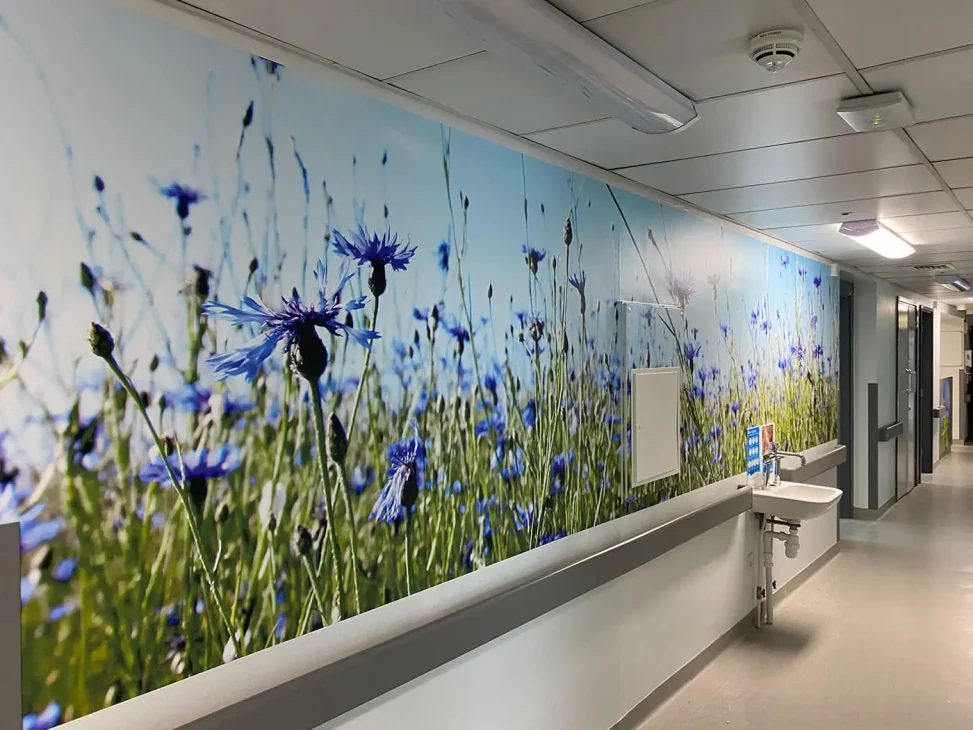
We love creating hospital spaces that make the journey for all users feel a little less daunting and provide a more supportive working environment for the staff. Want to find out how we can help your ward? Get in touch!
